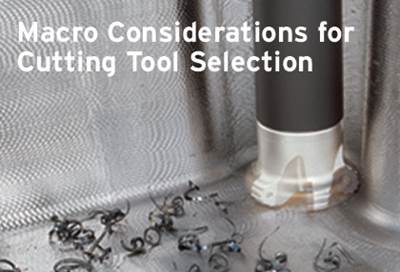Micro Machining: One Cutter Geometry Does Not Fit All
Learn why truly optimized micro machining requires cutter geometries designed specifically for that task and for the particular workpiece material.
Contrary to what one would assume, cutting tools for micro machining applications are not always simply smaller versions of their larger standard-size counterparts. Both size cutters may share the same effective combinations of carbide substrates and coatings, but truly optimized micro machining requires cutter geometries designed specifically for that task, and more importantly, for the particular workpiece material being micro machined.
Significant increases in tool life are the prime benefit of taking a geometry/workpiece material-focused approach to cutters for micro machining, a process where a cutter’s life is often measured by minutes as opposed to hours.
In micro milling applications, shops are cutting materials that vary from non-ferrous alloys to stainless steels and Inconels to heat-treated tool steels. And while there are micro milling cutters as small as and smaller than 0.001” in diameter, the most common cutter sizes used for micro milling metals tend to fall within the 0.003” and up diameter range.
When a metalcutting job requires a cutter diameter of 0.001” or smaller, it is often recommended to consider other machining alternatives, such as laser cutting or EDM, depending on the workpiece material. The reason is that such small cutters are usually limited to only those applications involving very soft materials, such as plastics.
Micro Hard Milling Applications
Many of today’s shops involved with micro machining are doing so on extremely hard metals, such as CPM (1-V, 3-V, 9-V) D2, A2 and F7 tool steels, along with hard powdered metals, all of which can be as hard, or harder than, 62-64 Rc. They also micro machine stainless steels like 450, 410, and 17-4 and Titanium and Inconel. For these shops, micro mills designed specifically for such tough materials reduce overall part production cycle times, help increase micro tool life and make micro hard milling cost effective for more parts that would have otherwise been machined using different processes.
Many producers of powdered metal tooling, for instance, have been heavily into micro hard milling over the years and can attest to the benefits of using geometry/material-specific cutters, as opposed to general-purpose ones. These shops admit that a materials approach to cutters is key when selecting the right cutting tool manufacturer—one that offer lines of micro endmills in various ranges designed for and tailored to micro machining specific groups of materials. This involves the development of special combinations of substrates, coatings and geometries unique to each range and aimed at optimizing cutter life and performance.
By incorporating such materials-focused endmills, shops doing hard milling can improve surface finishes to the point of eliminating large amounts of required secondary bench work, which in turn, can reduce production cycle times. Also, these shops gain the flexibility to use either EDM or micro hard milling, since the material-focused cutters have made micro hard milling a more cost-effective alternative than it was in the past.
Shops micro hard milling mold tooling can go through a lot of cutters on a daily basis. And out of those cutters, most sizes can range between 0.004” and 0.019” in diameter. Many of these shops would consider big cutters as those around 0.039” in diameter.
For shops producing powdered metal tooling, micro hard milling operations can involve imparting face detailing on punches and semi-finishing and finishing the surfaces of tooling used in the process. Tooling components are often made from various powdered metals and tool steels, such as CPM (1-V, 3-V,9-V), D2 and F7. Apparent hardnesses can be 55-64 Rc. However, particles within such CPM materials are often more along the lines of 70 Rc in hardness.
Traditionally, a large majority of such tooling components would be sinker EDMed, which would still involve micro milling details in electrodes needed for that process. However, sometimes the EDM process can be time consuming and require secondary benchwork because of required high luster mirror-like finishes.
Instead, micro hard milling these parts with material-focused cutters can significantly reduce the amount of required benchwork to achieve superior surface finishes and eliminate time spent making electrodes. All this, in turn, drastically shortens overall part processing times.
Micro Tool Types
Another reason micro hard milling is growing in popularity these days is that micro cutters are being offered in more expansive ranges of cutter reach lengths, provide longer cutting lives and generate near perfect surface finishes. And cutters are manufactured to exacting tolerances. For example, some cutting tool manufacturers hold diameter tolerances on their micro cutting tools to +0/- 0.0004” and to negligible amounts of tool runout, even in the shanks of the tools.
The smaller the tools, the more precisely they have to be manufactured. Flutes are tiny to begin with on micro cutters, and chip loads are slight. Any errors in the tool will be magnified when running at speeds in excess of 32,000 rpm for instance, and that will jeopardize part tolerances.
Micro tool geometries can differ substantially between micro cutter ranges, which could include square and ball end versions. Some are for non-ferrous or soft applications involving materials like aluminum, plastics and copper. Square-end tools are single-flute for optimized chip evacuation, while ball end versions have two flutes; and, geometries are extremely free cutting with very high positive rake angles. These are paired with a special carbide substrate and coating developed from aluminum cutters.
Other mid-range micro cutters have geometries developed for softer steels, such as stainless steels and Inconels. This group includes cutters with 4-degree rake angles and geometries that are not as free cutting as the non-ferrous tools, yet not as neutral as those for heat-treated steels. They also have their own unique carbide substrate/coating combination.
Still more micro tools apply only to hard/heat-treated tool steels, and again involve completely different carbide substrates, coatings and geometries. Geometries for the square end tools are neutral, with 0-rake and 0-helix. Ball end cutters do have some helix, but still 0-rake angles. A very specialized carbide substrate can be used for some heat-treated steels of micro tools. It is a much harder substrate best suited for heat-treated steels.
Micro Tool Tips
During operation, most of the principles that apply to larger diameter cutters also work for micro tools. As with bigger tools, a certain percentage of a micro tool’s diameter is used as a guideline for determining proper depths-of-cut for getting the longest cutter life and fastest cutting speeds possible. Although, shops may want to consider slightly higher percentages for feed-per-tooth amounts when running smaller cutters.
When it comes to micro machining, many shops often make two critical mistakes. One, they try to accomplish the process on machines with high enough spindle speed capability, but that lack the necessary control and accuracy for the task. The other is using subpar toolholding. Holders must be balanced and appropriate for the intended machine tool spindle–whether it’s 40,000 rpm or 100,000 rpm. The key is also extremely accurate clamping that provides as close to zero runout as possible. Toolholding systems such shrink-fit, hydraulic and certain collet types are most prevalent in micro machining applications.
Related Content
6 Ways to Optimize High-Feed Milling
High-feed milling can significantly outweigh potential reliability challenges. Consider these six strategies in order to make high-feed milling successful for your business.
Read MoreTreatment and Disposal of Used Metalworking Fluids
With greater emphasis on fluid longevity and fluid recycling, it is important to remember that water-based metalworking fluids are “consumable” and have a finite life.
Read MoreLaser Welding Versus Micro Welding
The latest battle in finely detailed restoration/repair of mold materials.
Read MoreHands-on Workshop Teaches Mold Maintenance Process
Intensive workshop teaches the process of mold maintenance to help put an end to the firefighting culture of many toolrooms.
Read MoreRead Next
Macro Considerations for Cutting Tool Selection
Selecting the best cutting tool is a critical activity to your business success. It’s a re-occurring job that directly impacts cycle time and your shop’s competitiveness.
Read MoreHow to Use Strategic Planning Tools, Data to Manage the Human Side of Business
Q&A with Marion Wells, MMT EAB member and founder of Human Asset Management.
Read MoreAre You a Moldmaker Considering 3D Printing? Consider the 3D Printing Workshop at NPE2024
Presentations will cover 3D printing for mold tooling, material innovation, product development, bridge production and full-scale, high-volume additive manufacturing.
Read More
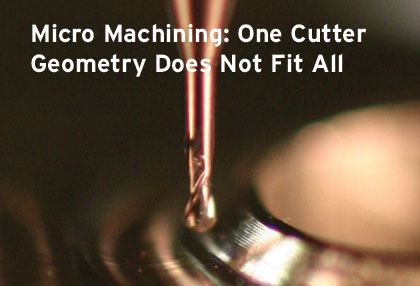
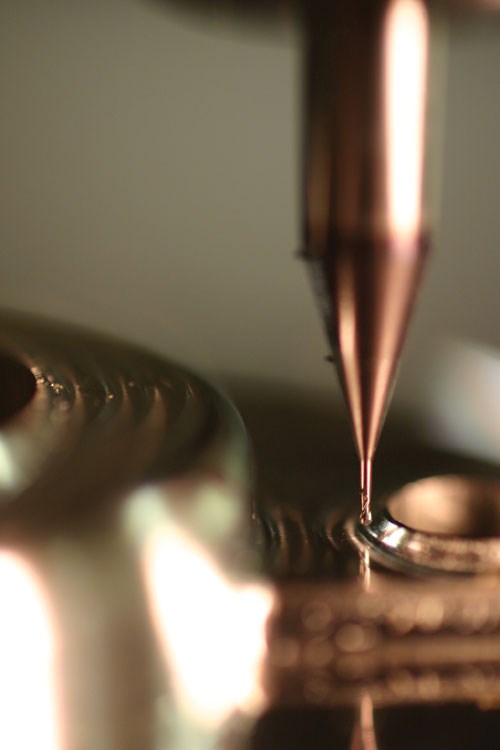
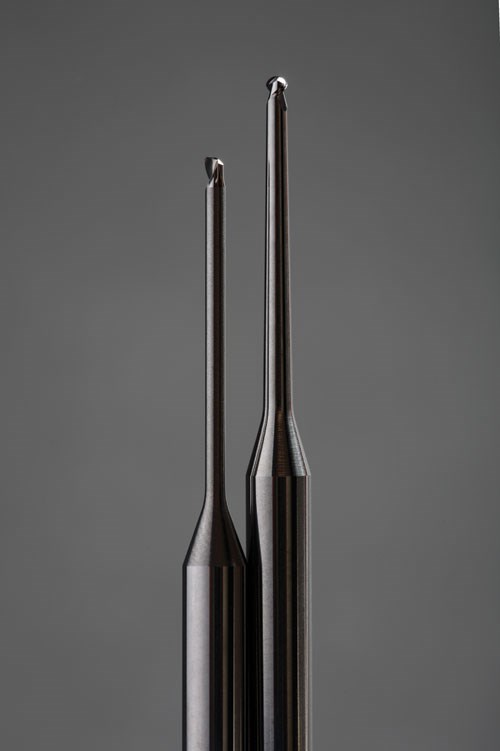
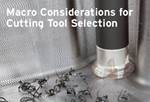





.png;maxWidth=300;quality=90)











